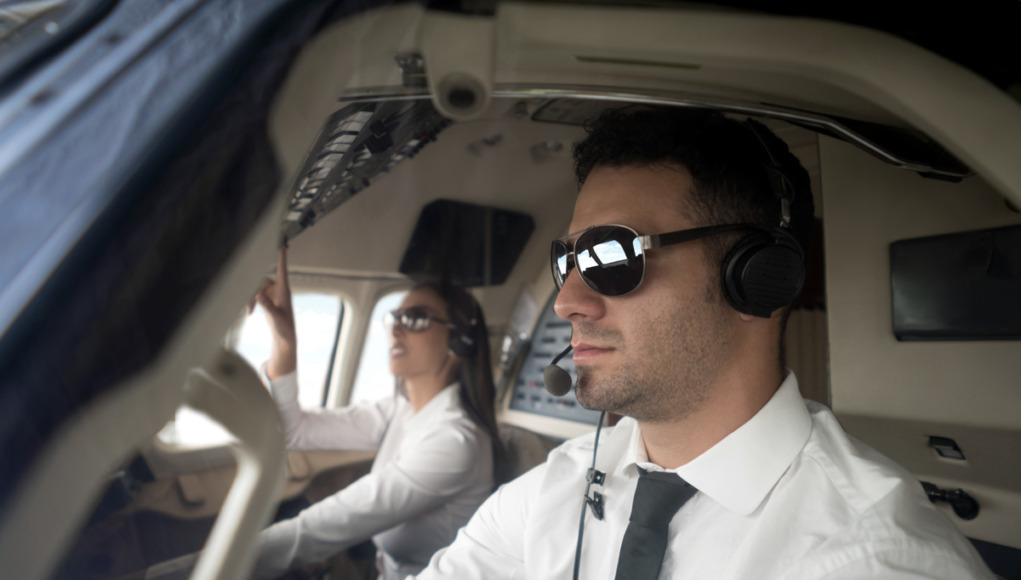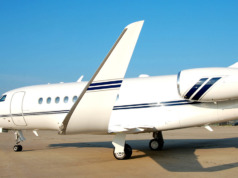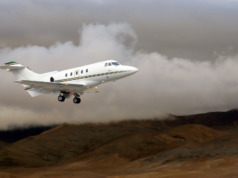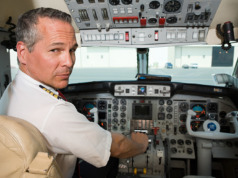“The Perfect Storm,” the title of Sebastian Junger’s 1997 best-seller, now describes the situation in the business aviation personnel marketplace – a confluence of events from the pandemic, as people stopped traveling, to demographic, as the largest population cohort in history continues to retire.
Before the COVID-19 crisis, the business aviation industry and the airlines were fighting over the pilot workforce, and while business aviation wasn’t necessarily losing “the war,” it definitely was losing many of the battles. A 2018 retention study showed that 63% of the operators surveyed had lost at least one pilot to a position elsewhere in the previous three years and 29% of the pilot force had changed jobs. Of that number, nearly half, 43%, chose the airlines as their job destination. The vast majority of the remaining pilots went to other operators within the industry and the percentage of those who were hired to fill a gap left by pilot departures for the airlines remains uncertain.
Why the strong draw of business aviation pilots to the airlines pre-COVID? In a word: demand. The airlines were expanding their fleets and baby boomer pilots were retiring in droves. The airlines were aggressively recruiting and business aviation pilots, already qualified in complex jets, were perfect candidates. The airline unions had negotiated lucrative contracts with the major carriers, and a business aviation pilot could calculate how much he or she could make working for a major carrier over a given period of time. The BA pilot could also choose a career where he or she could have a guaranteed schedule and more predictability. For many business aviation pilots, working for operators where paths for advancement and pay increases were uncertain and where time off was not predictable, a transition to the airlines was more desirable than remaining where they were.
In response, many business aviation operators made changes to their scheduling and compensation practices to retain their pilots, and in the process, the rate of compensation growth for pilot compensation increased to unprecedented levels. Going into 2020, the rate of pilot compensation increase was more than three times the rate of increase for all workers in private industry.
Then, the COVID crisis hit, and the bottom seemed to drop out. The airlines grounded large portions of their fleets and furloughed thousands of pilots. But, in their strategy to cope with the economic impact, the airlines used an additional tactic that sowed the first seeds of the upcoming personnel storm – they offered early retirement to thousands of pilots. The reasoning seemed sound at the time. Everyone expected the travel industry to take two to three years to recover and the pilots offered early retirement wouldn’t be needed before they retired anyway.
But that’s not what happened. The travel industry rebounded faster than anyone … almost anyone … predicted. As early as mid-March, the Wall Street Journal reported that airport business was on the upswing. In late March, the Dallas Morning News reported that American Airlines expected to have its full fleet back in operation by the end of the second quarter. “Bookings are at approximately 90% of 2019 levels and planes are filling up,” the airline said. At the beginning of April, CNBC reported that United Airlines told its staff that it was hiring hundreds of pilots in the coming months as the carrier planned for a travel recovery. A few days after that, Aerospace Technology reported that Delta Airlines, after committing to bringing back its furloughed pilots by the end of the year, had to cancel 100 flights on Easter Monday because the airline didn’t have the crew to fly them. Delta, along with the other major airlines, and multiple regional airlines, has resumed hiring.
With the travel industry in full-fledged recovery, the airlines are being forced to reconstitute far more quickly than anticipated and do so with thousands of pilots unavailable due to early retirement and baby boomer pilots still retiring. In fact, the airlines’ hiring efforts are becoming somewhat frantic. For example, when the COVID crisis hit, two pilots, one each in the pipeline for Southwest and United Airlines, were told to stand down. They also were told that when the crisis passed, they would have to begin the hiring process anew and compete against other candidates. But just this week, both were called by their respective airlines and offered training class dates in the near future.
And, of course, the airline pilot unions, like the Airline Pilots Association and the Allied Pilots Association are waiting in the wings, eager to negotiate more lucrative contracts with the airlines as the demand for pilots continues to grow, according to anecdotal evidence.
In the meantime, business aviation is in a recovery phase of its own. WingX, a business aviation data analytics company, published statistics this spring on the COVID recovery and indicated that business aviation was down only 2% year over year, January-February 2020, before the pandemic was declared, versus January-February 2021. WingX, also said that business aviation accounted for a larger percentage of fixed wing traffic during the two months in 2021, at 19%, then 12% for the same time in the previous year. In April, fractional provider NetJets, which had furloughed pilots due to the COVID crisis, announced it was resuming hiring and planned to hire 150 pilots in the coming months to crew the 39 new aircraft that it had purchased.
So, What Does This All Mean for You?
The perfect storm is on the near horizon, and is headed our way like a fast-moving line of thunderstorms. The airline hiring process is full-on and the draw of pilots from business aviation to the airlines will be inexorable. The airline demand will create vacancies that will have to be filled. If you’re an aircraft owner, you’re going to have an airline problem. You can lose people directly to the airlines, or you can lose them to another operator who has an airline-driven vacancy to fill.
Or you can be proactive, and do the right thing for your people – give them a good quality of life, pay them competitively, and create a culture where your people feel valued – and inspire them to stay with you. The choice is yours. You can prepare for the storm or get lost in it. BAA
Christopher Broyhill, PhD, CAM is the Founder and President of Citadel Consulting LLC. His proprietary survey data are used here, and he is the author of Business Aviation Leadership: From the Traits to the Trenches.






